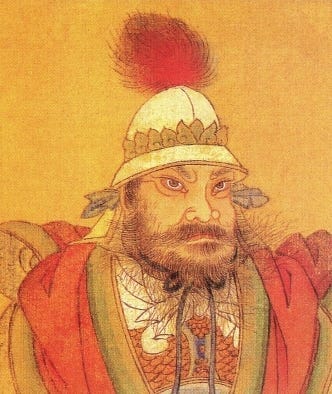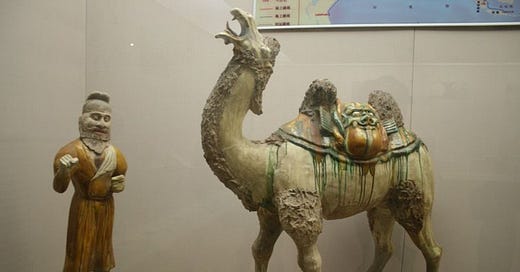The Silk Road Conflict That Wiped Out One-Sixth of Humanity
The devastating effects of the An Lushan rebellion
Few historical events have caused as much death and destruction as the World Wars. The An Lushan rebellion was one of them. The An Lushan revolt, also called the An-Shi rebellion, occurred in China from 755 to 763 AD. It was one of the bloodiest wars in human history. In 754, 52 million people lived in China, but after the war, that number dropped to 16.3 million in 764.
Almost 36 million people died during the conflict years, which was one-sixth of the world’s population. To put it in perspective, the death toll was like that of World War I. You can only imagine how horrific the war was in the 8th century to have losses similar to the Great War.
Though historians debate whether two-thirds of China’s population could vanish within ten years, there is little doubt that the An Lushan rebellion was a brutal episode of human tragedy. The uprising broke up the multiethnic society of the Tang Empire and made the Chinese suspicious of foreigners. We come across one of the earliest documented evidence of ethnic cleansing during the revolt.
Who was An Lushan, and why did he rebel? What were some of the long-term effects of the war?
Let us find out.
Reminder: By choosing a paid membership (just $5 a month or $50 annually), you're helping amplify voices that history books too often overlook. Your support means these stories get the attention they deserve.
You’ll gain access to tons of members-only content👇
Full-length deep dives into untold stories, like this one: no paywalls, no cuts.
The entire archive of extraordinary tales from the Ice Age to the Fall of the Mongol Empire, the hottest archaeological finds, and the appetizing history of food.
Early access to special editions, be the first to dive in.
Join lively discussions in members-only posts and subscriber chats (there’s one at the end of the post!).
Origins of Discontent: The Rise of An Lushan

The Tang dynasty seized control of China in 618, with Gaozu of Tang as the first emperor. During the transition from the Sui to the Tang dynasty (613-628), China entered a chaotic period. The Göktürks took advantage of the chaos to launch raids inside the country.
In 626, Illig, the Khagan of the Eastern Göktürks, marched onto the Chinese capital, Chang'an, forcing the Tang ruler Li Shimin, better known as Taizong, to accept a peace treaty. Taizong is one of the most well-known rulers in Chinese history, and he wouldn’t forget the humiliation at the hands of the Turks.
In 629, Taizong declared war against the Turks, and the Chinese crushed the Göktürks at the Battle of Yinshan in 630. Illig was captured and taken as a prisoner. China absorbed the eastern half of the Turkic Khaganate. In 657, the Tangs also conquered the Western Turkic Khaganate. The Turks recognized Emperor Taizong as Khagan of Heaven, making him the first Chinese emperor to achieve such a title and rule over the nomadic people of the Eurasian Steppes.
Turkic tribes integrated into mainstream Chinese civilization and became the second biggest ethnic group after the Han Chinese. In addition to the Turks, Persians, Arabs, Sogdians, Koreans, and Japanese lived in China and held important positions in Tang society.
The Tang emperors were proud of their multi-cultural civilization, but not everyone agreed. The Orkhon inscriptions, which the Turks wrote at the beginning of the 8th century, a few years before the An Lushan rebellion, lamented how Tang wealth ruined the lives of nomadic people. The once proud Turks were now forced to serve the Tang armies and waged wars on China’s behalf.
The ethnic tensions between Turks and the Han Chinese weren’t one-sided. Many Tang authorities were similarly wary of Turks and their growing influence in Chinese politics.
However, some officials, like the chancellor, Li Linfu, suspected other Chinese courtiers of plotting against him and found the idea of deploying notable foreign-origin warriors to high positions a suitable countermeasure.
Linfu was a shrewd politician who knew the ins and outs of Tang court politics. In 751, he persuaded Emperor Xuanzong to promote an influential general named An Lushan to the post of Jiedushi, or regional commander. As the Jiedushi of the Northern region, An Lushan headed an army of over 164,000 troops.
This decision proved fatal a few years later, as the Tang empire faced a revolt by their once-trusted warrior. Why did An Lushan revolt against the emperor despite his prestigious position in the Tang society?

Keep reading with a 7-day free trial
Subscribe to Forgotten Footprints to keep reading this post and get 7 days of free access to the full post archives.





